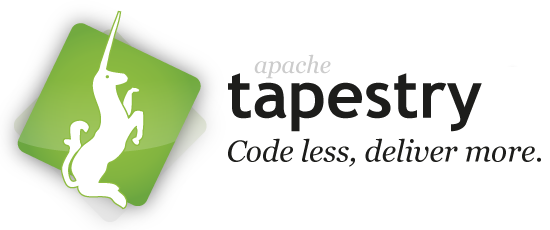Tapestry is a component-oriented Java web app framework focusing on performance and developer productivity.
A component is just a reusable part of a page. It's trivially easy to create your own components, and Tapestry comes with a large number of components you can use (Form, Loop, Select, Checkbox, Grid, BeanEditor, etc.).
In Tapestry, each page and component is a simple Java POJO with a corresponding HTML template. The HTML template and corresponding Java class have the same name (e.g. "Breadcrumbs.html" and "Breadcrumbs.java"), so you don't have to tell Tapestry which template uses which Java class. It's automatic.
Tapestry features live class reloading: change your Java code, refresh the browser and see the changes instantly.
AJAX support allows you to create responsive web interfaces while writing little to no JavaScript. (But if you like writing JavaScript, great, no problem, Tapestry gets out of your way.)
Main article: Getting Started
You can let Apache Maven create your initial project for you:
mvn archetype:generate -DarchetypeCatalog=http://tapestry.apache.org
Maven will prompt you for the archetype to create ("Tapestry 5 Quickstart Project") and the Tapestry version number (e.g., "5.4.3"). It also asks you to create a group id, artifact id (e.g., "newapp") and version number for your app. Once Maven dowloads everything, then you can start the app:
$ cd newapp
$ mvn jetty:run
Then just send your browser to http://localhost:8080/newapp
See the Getting Started introduction as well as the Tapestry Tutorial for a deeper dive.
See https://tapestry.apache.org/documentation.html for the details on every Tapestry topic.
